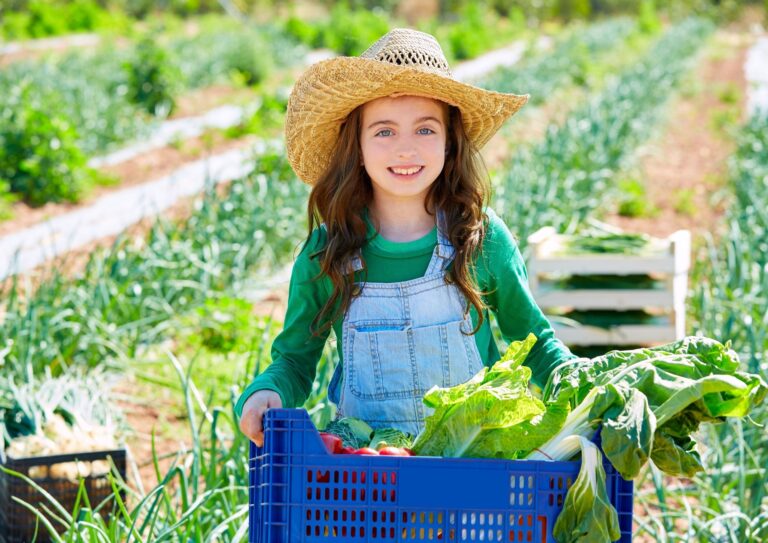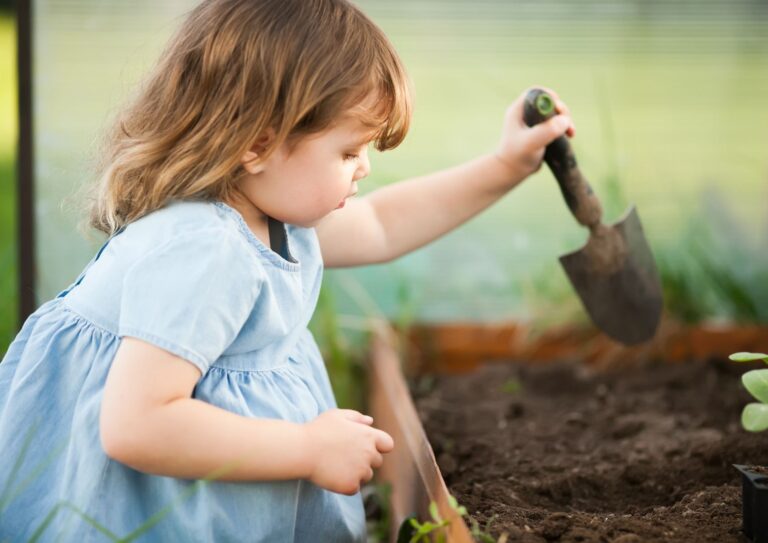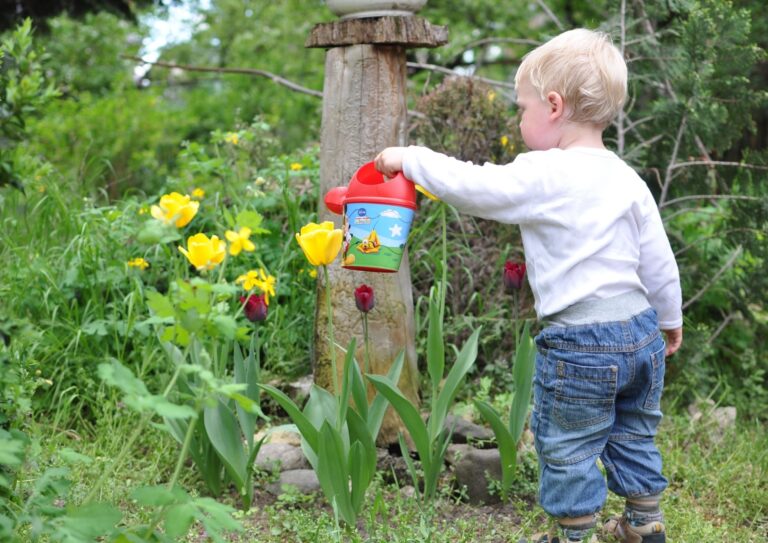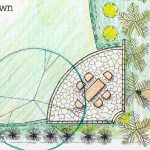Wouldn’t it be just fantastic to have a handbook handy to show you all the ins and outs of garden planning for kids? Don’t worry, we’re here to help you out with a guide! We will teach you how to plan a garden for kids that’s educational, fun, and purposeful.
A garden for kids should not only serve as a teaching instrument. It should also engage your kids’ senses. To a child, color, fragrance, and texture all strongly affect their sense of touch. Encouraging a love for gardening and stewardship demands a garden that is both instructional and appealing. A garden can be beneficial to even the youngest of children.
There are a lot of things to think about, such as what type of garden you want—herb, flower, or vegetables. When planning a garden with kids, you also need to figure out what kind of supplies and tools you’ll need. This simple but complete guide will help you learn the basics of planning a garden.

Garden Planning for Kids: Supplies
It is in everyone’s best interest to keep things simple. While the daisy-spout watering container is charming, an old iced-tea pitcher does the job just as well. Likewise, it’s necessary to have the right kid-friendly gardening tools to help your kids.
Below is a list of tasks you can conduct to start your gardening activities. Aside from these, you may also add other elements of fun into the mix. Do not forget to bring your camera to capture the joyful moments of planning a garden with kids!
- The parent determines which materials are required for each child and how much should be available.
- The parent conceals supplies in the yard.
- Each youngster is given a list of the hidden things.
- The child who finds the most items wins a gardening prize like a new hat or gloves.
- Ask children to write down what they did today on their own calendar. Making a note of each activity gives a convenient reference for the following year.
Following below is a list of supplies we found useful when gardening:.
Ideas for Supplies
- Digging shovels with long handles
- Rakes for the garden
- Hoes and cultivators with long handles
- Trowels for little jobs
- Small claw/cultivator tool for loosening weeds and breaking up soil clods.
- Tape measurements
- Snips for crafts (or pruners, with adult assistance)
- Cans of water
- String
- Craft sticks made of wood
- Baskets made of plastic
- Towels/pads for kneeling (optional)
- Sunglasses, hats, and sunscreen
- Calendar notebooks, pencils, and permanent markers are all available.
- Packets of seeds


Where to Grow Your Garden for Kids?
Are you ready to get your kids involved in gardening? One of the first things you should set out and do is source the sunniest patch of dirt in your front or back garden.
Why not involve your kid in a fun spotting activity?
Here are some useful ideas you can do when looking for the ideal spot include:
- Be armed with your notebook and pencil when venturing out into your garden early in the morning.
- Next, give your child an area to watch while ensuring the designated spot can be turned into a garden if chosen. Ideally, the site should be near a water source and not a high people traffic section of your garden.
- Have your child write down the time they observed the sun shining onto the designated area.
- Set your timer and ask your child to write down whether the sun is still shining in this location.
- Repeat the procedure throughout the day until there is no more sun shining in your yard.
- Add up the number of hours the sun has been shining. If it amounts to more than six hours, it is the perfect spot for starting your garden.
Measure and Mark Your Garden for Kids
Now that you have your spot in mind where you will be planning a garden, the time has come to use a tape measure, a few pieces of wooden craft sticks, and a string, so you can mark the area you want to turn into a garden.
Speak to your child and ask them if they favor a square or round bed. Option one is perfect for any seed or plants you want to sow. Round beds are more suited to a smaller garden, which is also referred to as a pizza garden.
Preparing the Kid’s Garden Bed
Now that you’ve decided on the right location, you can now start digging the dirt. According to the National Wildlife Federation, these kinds of activities are entertaining and very healthy for the kids. Besides, soil contains healthy kinds of parasites, viruses, and bacteria that will build up your growing child’s immune system.
Get ready for fun garden bed digging activities!
- In using shovels, rakes, and hoes, your child has the joyful task of removing grass and weeds. Be sure to have some refreshments handy to reward them for their hard work.
- Do your best to prepare an area in your garden that is free of weeds, rocks, and grass.
- Do not pack the garden tools away, as you’ll need them for adding compost later on.
Check the Quality of the Garden Soil
Involve your children in yet another fun activity that they will surely love by letting them experience the feel of the soil between their fingers!
They should be able to tell you if the soil is thin and sandy, slick, or dark and rich.
What about earthworms that wriggle around in the dirt? Don’t worry! Those worms are a good sign that your soil is rich in organic matter and perfect for hosting new plants.


Time to Choose Your Plants and Engage in Planting Activities
You know your children better than anyone else. No doubt their taste differs. One child may love eating salad while another would prefer pasta meals. Same way, you will know which plants you should put in your garden, whether carrots, tomatoes, lettuce, cucumbers, or a combination of these.
It might be a good idea to take your kids along to the farmer’s market or grocery store. This can help whet their appetite for what is possible with regards to the variety of vegetables and herbs they can grow in their very own garden.
With all the tips and guides we’ve presented you, are you now ready to start with your garden planning for kids? Don’t forget to involve them in all the designing and decision-making for more fun and engaging approach! Over to you!
Related Posts
-
Garden Planning for Kids - 10 Fun and Easy Tips!
Garden planning for kids shouldn't be stressful! In fact we have turned garden planning for…
-
DIY Fairy Garden for Kids
How Do You Make a Magical Fairy Garden for Kids? You may be wondering, do…
-
How to Create a Butterfly Garden for Kids
Imagine a visual of your garden where you see a group of colourful butterflies gracefully…



